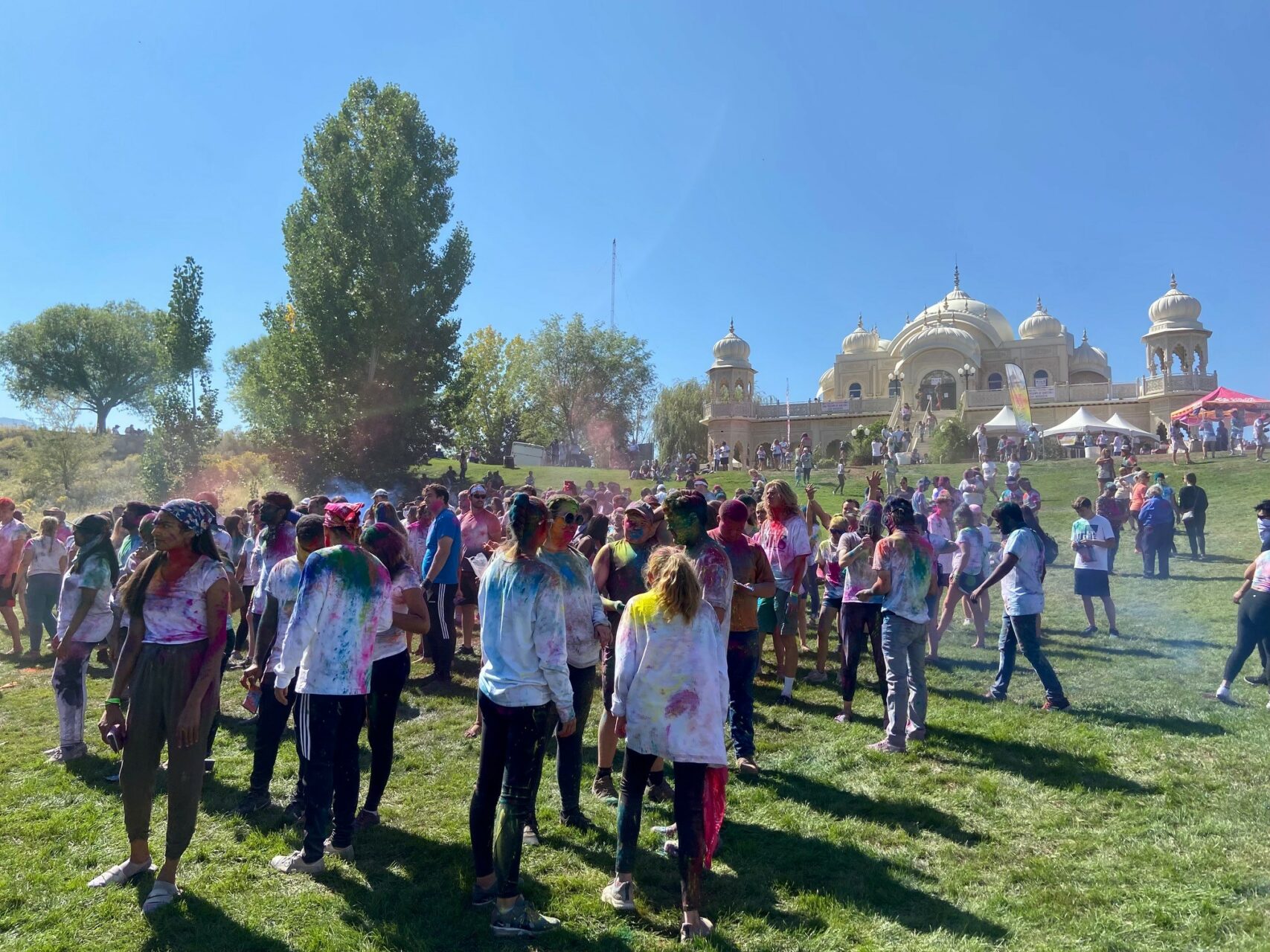SPANISH FORK — The Hindu community and other Utahns celebrated Holi at the Sri Sri Radha Krishna Temple on Saturday and Sunday. The two-day celebration consisted of throwing colored powders, dancing, singing, yoga and lots of food.
“It’s a party. The roads get shut down. People are everywhere celebrating and having fun,” BYU law student Shubi Shah said about his childhood memories celebrating Holi in India.
Typically celebrated in the spring, Holi is a Hindu celebration of life and rejuvenation. “Even though we are having it in the fall, still, we are meant to be moving forward, transforming ourselves for the better, throwing off the old, unveiling the new,” Krishna temple priest Caru Das Adikari said.
The festival also celebrated diversity and the way in which everyone compliments each other, Adikari said. “There’s no need to be fearful or suspicious or distrustful of people who look different than you. It just means they are supplying something you can’t, that’s all.”
There were people from the Hindu faith at the festival along with members from many other faiths and backgrounds.
“We aren’t Black or white or Christian or Hindu, those are designations and they are generated from the body and the mind which we are not,” Adikari said.
Shah, who grew up in both India and Africa, said that to him Holi represents togetherness. He explained that in India most everyone lives in apartments, like New York, because there are so many people. Holi would bring the entire community out to celebrate together.
Shah recalled one of his favorite memories of Holi when his friend dumped an entire bucket of water on him. “It was a long night of putting my phone in rice,” he said.

The festival had 11 food vendors, all vegetarian and vegan. Adikari explained that the festival is meant to celebrate commonalities and more specifically the “eternal living force” within everyone.
“If you expand that principle, it means that we should not only respect living beings in human bodies, but in animal bodies, reptile bodies, bird bodies. We should respect life wherever we see it, because life, all life, is coming from God, who is divine,” Adikari said.
BYU student Autumn DeLange from Provo was at the festival for her experience design and management festival and events class. “Basically we go to festivals to see what’s up so we can see how to plan them,” DeLange said.
DeLange and her friend, Haley Nelson, said they enjoyed food from one of the vendors, Krishna’s Cuisine. “They have lots of options … we got to try a bunch of things,” DeLange said.
Krishna’s Cuisine sold “five-course platters” that were popular at the event. The platters included basmati rice, chana garbanzo chili, a garden veggie curry with paneer, sak paneer and cherry halwa, a traditional Indian dessert.
Shah said he loves the diversity of Indian cuisine. “There are some parts of India where I haven’t ever had their cuisine … If you go from one state to another or even one area to another, one region to another, the cuisine changes completely,” Shah said.
The festival also had llamas to pet and henna — a reddish-brown dye used to make temporary tattoos — along with colored powders, tie-dye, crystals, jewelry and clothing for sale.





